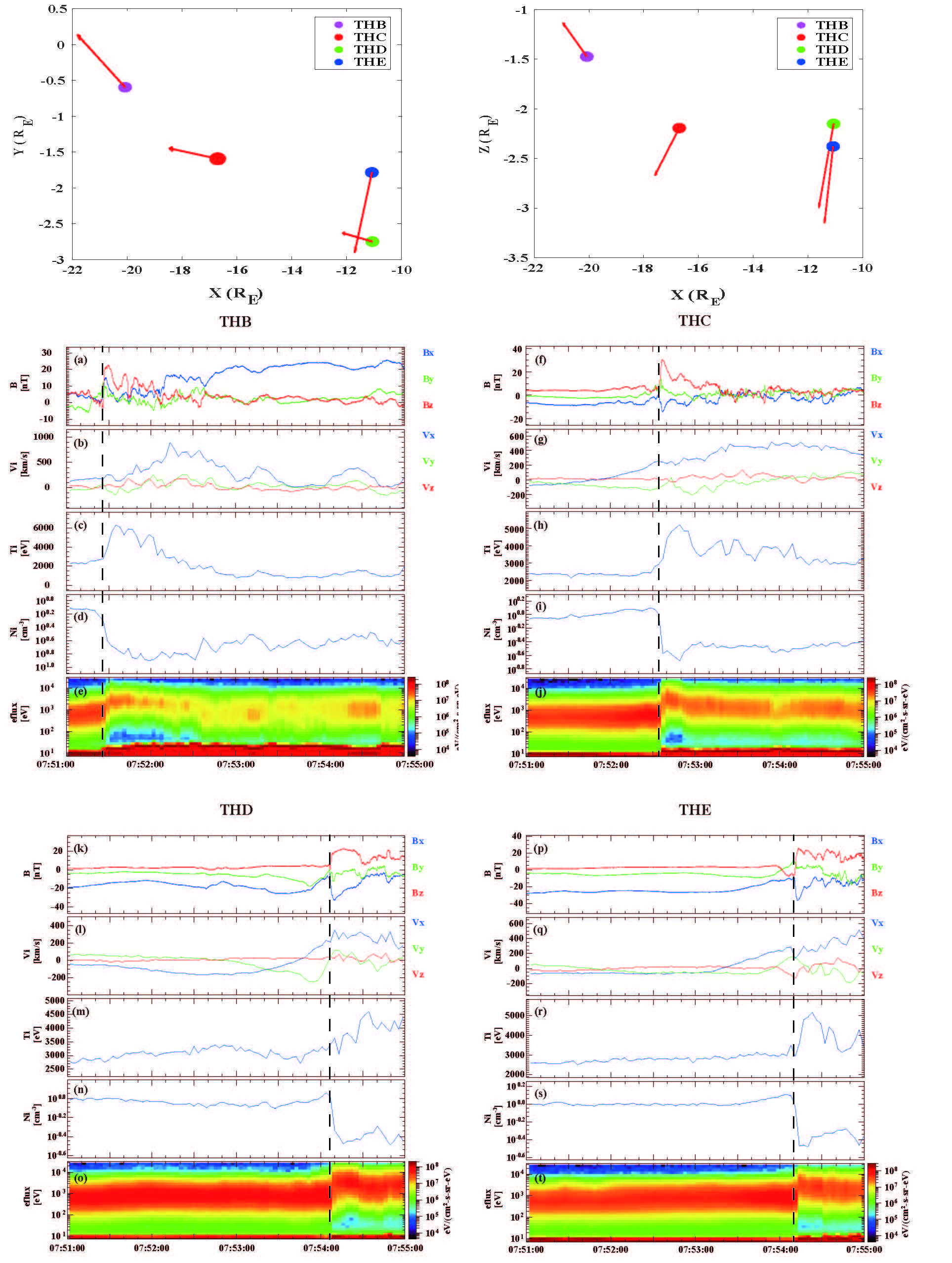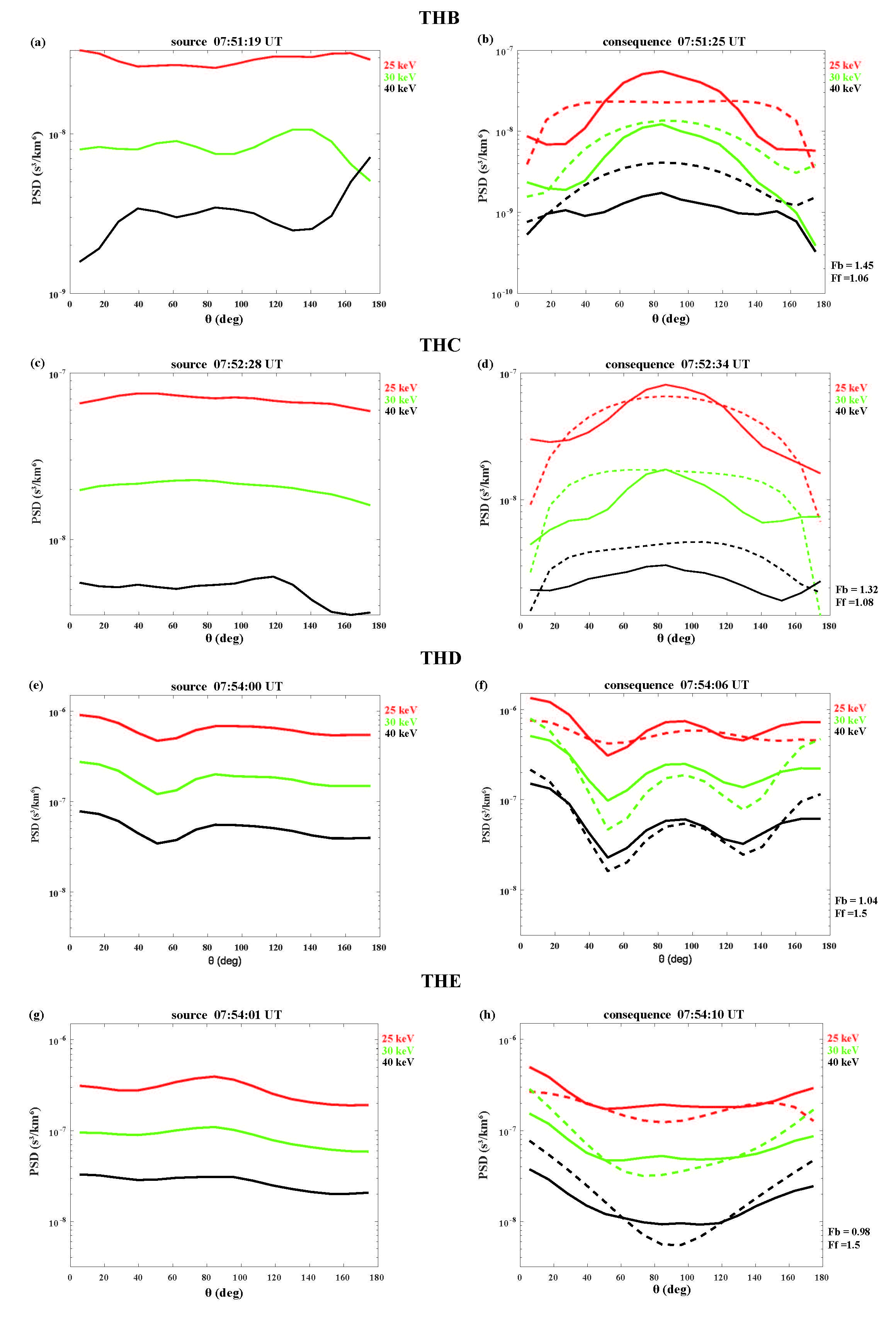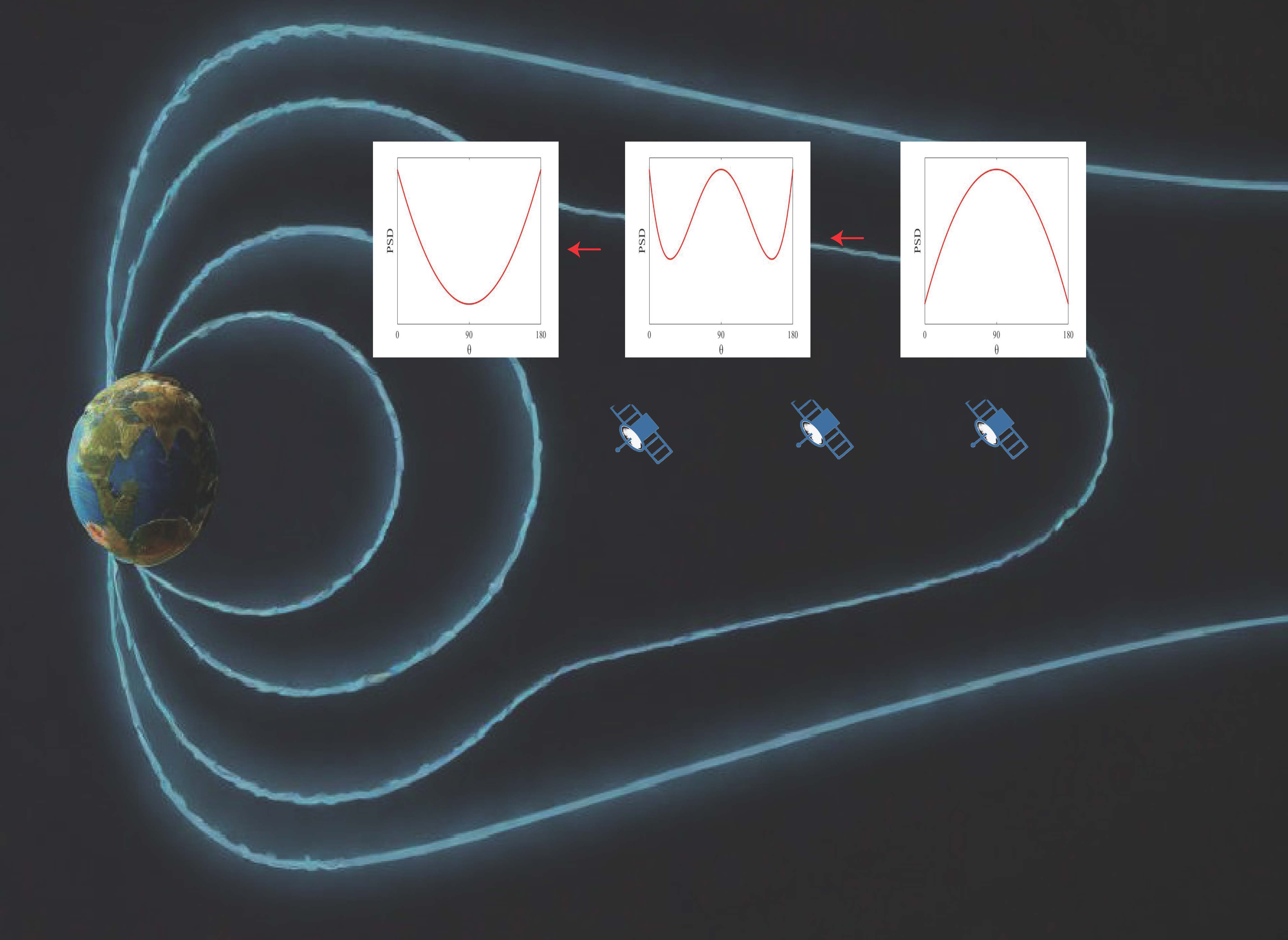
2024 THEMIS SCIENCE NUGGETS
THEMIS Probes Observed Temporal Evolution of Electron Accelerations behind the Dipolarization Front in the Earths Magnetotail
Xiangxi Deng, Zhigang Yuan
School of Earth and Space Science and Technology, Wuhan University, Wuhan, China
Introduction
The dipolarization front (DF), as the leading edge of fast earthward plasma flow in the planetary magnetotail, plays an important role in the plasma energization and energy transportation from the magnetotail to inner magnetosphere. The magnetic field strength behind the DF is intense and larger than that in the plasma sheet, named the magnetic flux pileup region (FPR). Electrons can be energized to hundreds of keV by DF in the FPRs, the mechanism can be adiabatic or nonadiabatic. Energetic electrons in the FPR usually have four types of pitch angle distributions (PADs): pancake distributions (maximum at 90°), cigar distributions (maximum at 0° and 180°), rolling-pin distributions (maximum at 0°, 90°, and 180°), and isotropic distributions. The statistical results have displayed that pancake and cigar distributions are generated in sequence during the propagation of DF. However, the statistical results did not reveal the rolling-pin distributions behind DF. In addition, the quantitative analysis of the observed temporal evolution of electron accelerations behind the DF is absent.
| Figure 1. THEMIS observations of DF between 07:51 UT and 07:55 UT on February 27, 2009 for event 1#. THEMIS positions in (a) X-Y and (b) X-Z planes (upper panel). Arrows indicate the normal direction of DF. Four THEMIS spacecraft have the same panel. For THB, (c) three components of magnetic field, (d) three components of ion velocity, (e) ion temperature, (f) ion number density, and (g) electron differential energy flux. The dashed vertical lines indicate the arrival time of DF. |
Results
Between 07:51 UT and 07:55 UT on March 28, 2016, four THEMIS spacecraft (THB, THC, THD, and THE) captured the same earthward propagating DF from the mid-tail to near-Earth region in sequence. Pancake, rolling-pin, and cigar types of electron pitch angle distributions behind the DF are sequentially observed. Based on Liouvilleʼs theorem, the analytical model reveals that pancake distribution is dominantly formed by betatron acceleration in the early stage, rolling-pin distribution is generated by both dominant Fermi and weak betatron acceleration in the transition stage, while cigar distribution is formed by Fermi acceleration.
| Figure 2. The phase space density of energetic electrons as a function of the pitch angles for event 1#. (a,c,e, and g) PSD before the DF. (b, d, f and h) PSD behind the DF. The results are shown at different times and different spacecraft: (a) THB 07:51:25 UT; (b) THC 07:52:43 UT; (c) THD 07:54:06 UT; and (d) THE 07:54:10 UT. Solid lines represent the observations, while dashed lines show the modeling results. |
| Figure 3. A diagram of the entire dipolarization front propagation process from the mid-tail to the near-Earth region. Positions of three spacecraft and corresponding pitch angle distributions at times. |
Conclusion
THEMIS observations provide an in-situ observational evidence of the temporal evolution of electron acceleration behind DF during earthward propagation. The temporal evolution of the competition between betatron and Fermi acceleration leads to the formations of Pancake, rolling-pin, and cigar types of electron pitch angle distributions behind the DF in sequence.
References
X. X. Deng, Z. G. Yuan, S. Y. Huang, K. Jiang (2024). Temporal Evolution of Electron Accelerations behind the Dipolarization Front in the Earthʼs Magnetotail. The Astrophysical Journal, 974:52 (9pp), 2024 October 10. https://doi.org/10.3847/1538-4357/ad711a.Biographical Note
Xiangxi Deng is a postgraduate student in the School of Earth and Space Science and Technology, Wuhan University. His research focuses on the magnetospheric dynamics. Zhigang Yuan is a professor in the School of Earth and Space Science and Technology, Wuhan University. His research focuses on the magnetospheric dynamics, and the coupling between the magnetosphere and ionosphere.
 Please send comments/suggestions to
Emmanuel Masongsong / emasongsong @ igpp.ucla.edu
Please send comments/suggestions to
Emmanuel Masongsong / emasongsong @ igpp.ucla.edu



